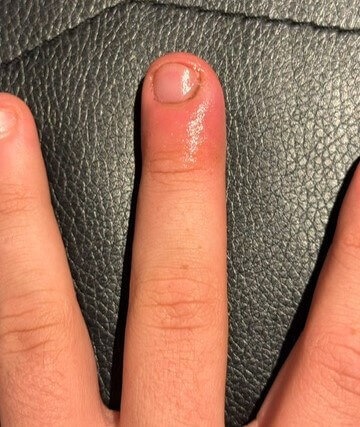
Paronychia – an infection of the nail bed
An infection of the nail bed (paronychia), what a romantic name for a medical condition that is super common in children and adults. So small, but so painful and irritating.
What is paronychia?
We have a basic chapter on our website about bacterial skin infections. Paronychia is simply a type of skin infection that occurs in the area of skin that connects the nailbed to the skin. Take a look at the image attached.

What causes paronychia?
Sometimes it can be caused by local trauma, or even the peeling of the skin in the area (especially in those who bite on their nails), but mostly it happens for no apparent reason. Paronychia tends to be more common in children over the age of 5 years who suck on their fingers.
Bacteria that is found on the skin on all of our bodies penetrates the area through the trauma (even if the trauma was so minor that it wasn’t felt and cannot be sent) and then inflammation develops in the area.
What are the most common bacteria causing paronychia?
The bacteria most commonly associated with skin infections is staphylococcus aureus. Less common is streptococcus, and Candida follows.
How can we detect parnoychia?
That’s easy.
Redness, edema, pain, tenderness and swelling of the area, mostly seen in one finger. Sometimes you can really see a small “bag” with pus.
The patients do not typically experience systemic fever as this is simply a localized infection.
How is paronychia treated?
There are several steps to the treatment:
# Soaking the fingers in a warm compress or an antiseptic.
# Application of antibiotic ointment – the following ointments are preferred: mupirocin, fusidin, or 3% synthomicin.
Oral antibiotics are usually not required unless the infection worsens.
What about drainage?
This is very important.
If there is visible pus that can be drained (see the first image attached), the recovery will be much faster if it is drained. Therefore, even though it may hurt, you can “squeeze” the finger to try and drain the pus out.
Draining with a needle must be done using a special technique by a physician.
In summary, this is a small but common and painful topic in pediatrics (and adult medicine). So, on the one hand, don’t be too concerned, but do make sure to see your doctor so that they can manage this infection appropriately, as per the guidelines on this website.
Good luck!
So small, but so painful and irritating.
For comments and questions, please register
